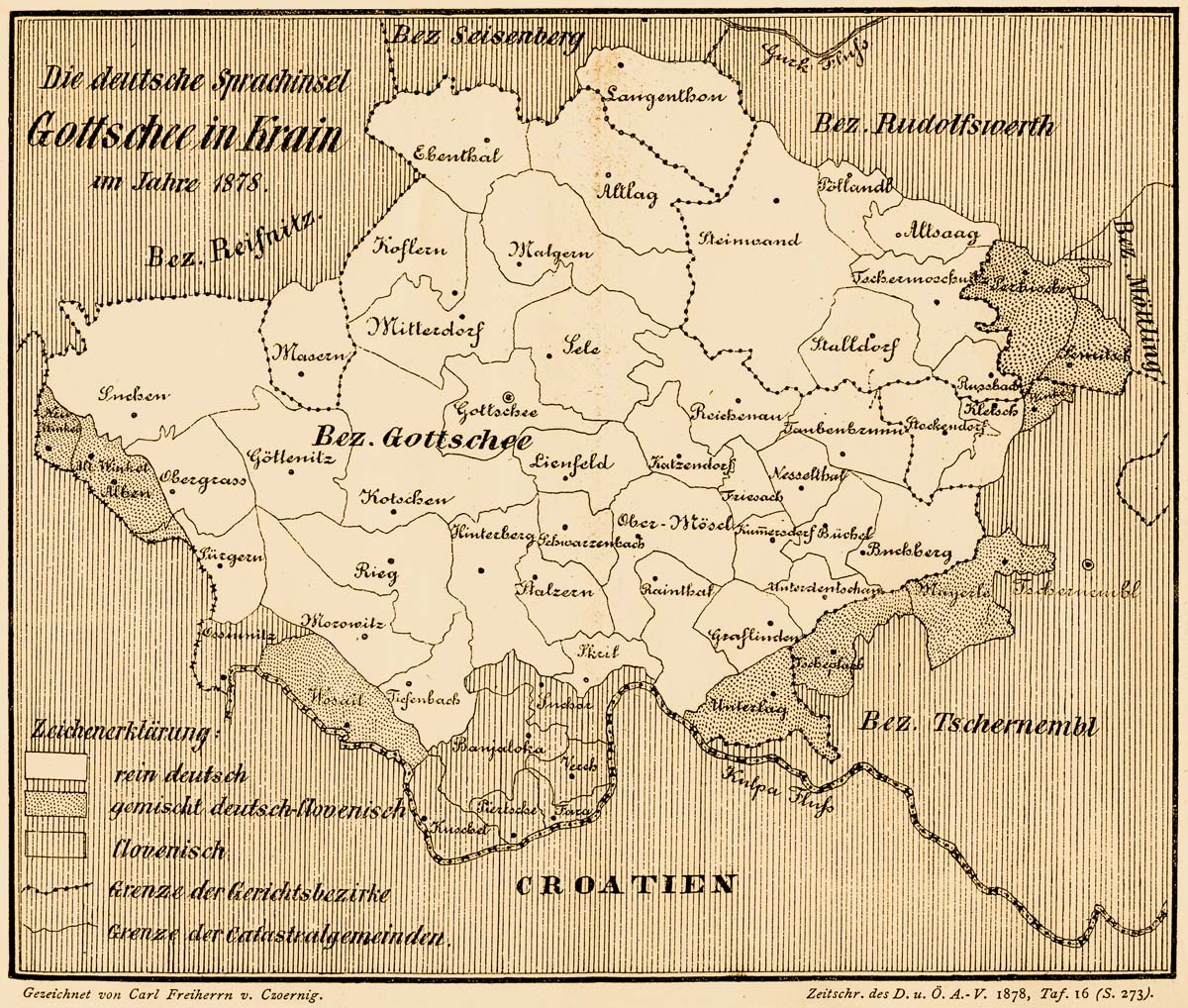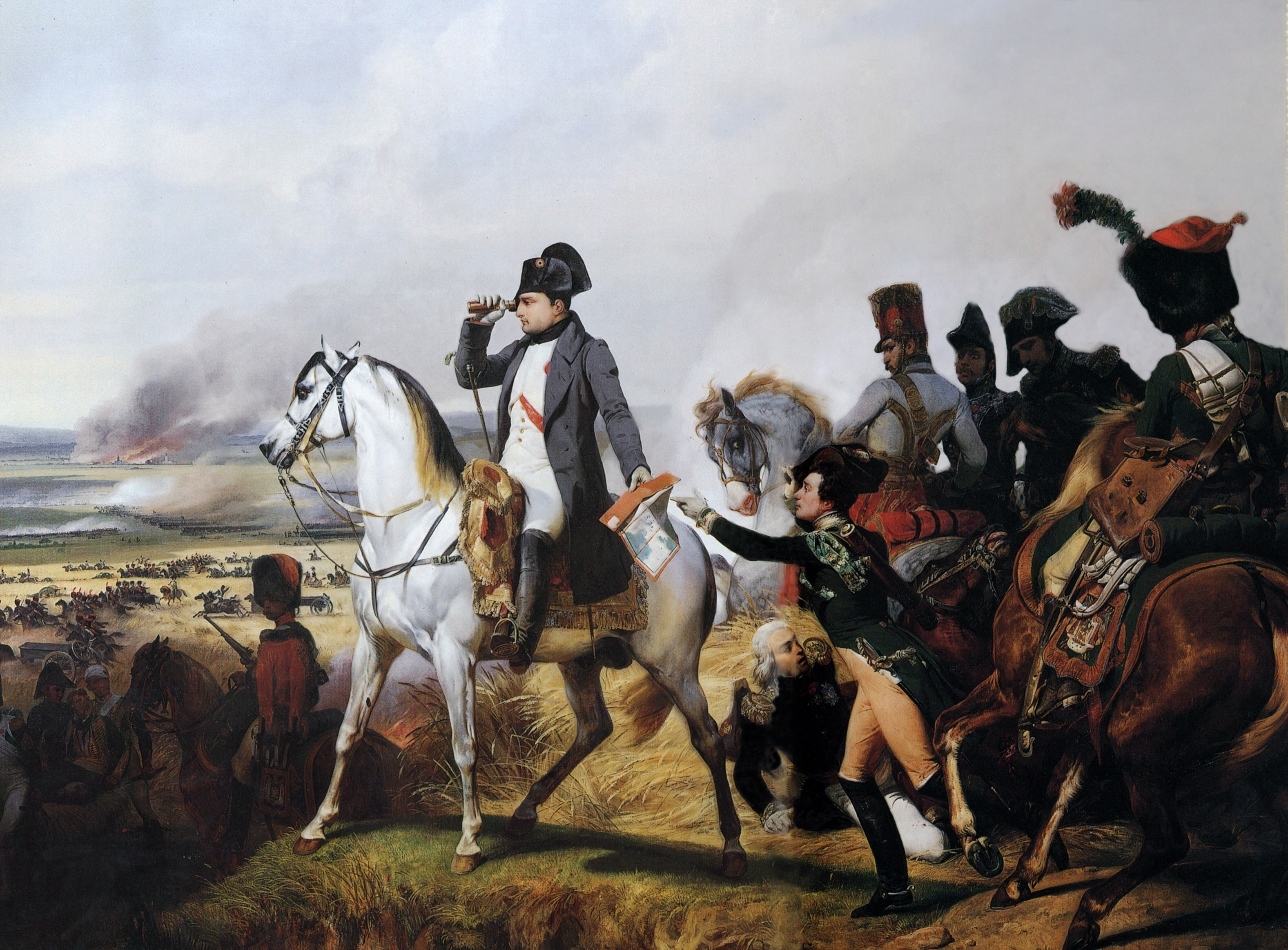|
Johann Erker
Johann Erker (1781 – October 18, 1809) was an Austrians, Austrian rebel leader against the First French Empire, French occupation of the region during the War of the Fifth Coalition in the 1809 Gottscheer Rebellion. Erker was a Gottscheers, Gottscheer, who were ethnic Germans descended from 14th century Tyrolean and Carinthian settlers to the then uninhabited Gottschee region. According to the parish death records, Erker was 28 years old when he died, and lived in Windischdorf #12. It is unknown if he ever served in the Austrian military, however he was almost certainly in the local Landwehr battalions raised by the Austrian government in 1808. During the 1809 campaign, a Gottscheer Battalion was stationed on the Italian front and after Austria's military collapse they returned to their home region. When the French advanced into Carniola and towards Gottschee in July, 900 Gottscheer Landwehr soldiers assembled to resist the advance. They were quickly dispersed by the French col ... [...More Info...] [...Related Items...] OR: [Wikipedia] [Google] [Baidu] |
Slovenska Vas, Kočevje
Slovenska Vas (; sl, Slovenska vas, german: Windischdorf''Leksikon občin kraljestev in dežel zastopanih v državnem zboru,'' vol. 6: ''Kranjsko''. 1906. Vienna: C. Kr. Dvorna in Državna Tiskarna, p. 42.) is a settlement on the Rinža, Rinža River west of Stara Cerkev in the Municipality of Kočevje in southern Slovenia. The area is part of the traditional region of Lower Carniola and is now included in the Southeast Slovenia Statistical Region. References External linksSlovenska Vas on Geopedia Populated places in the Municipality of Kočevje {{Kočevje-geo-stub ... [...More Info...] [...Related Items...] OR: [Wikipedia] [Google] [Baidu] |
Gottschee
Gottschee (, sl, Kočevsko) refers to a former German-speaking region in Carniola, a crownland of the Habsburg monarchy, Habsburg Empire, part of the historical and traditional region of Lower Carniola, now in Slovenia. The region has been a county, duchy, district, and municipality during various parts of its history. The term often also refers to the entire Ethnolinguistics, ethnolinguistic Enclave and exclave, enclave regardless of administrative borders. Today Gottschee largely corresponds to the Municipality of Kočevje. The original German settlers of the region are called Gottschee Germans or Gottscheers, and their German dialect is called Gottschee German or Gottscheerish. Geography The Gottschee enclave encompassed a roughly oval-shaped area between 45° 46′ N and 45° 30′ N, and between 14° 36′ E and 15° 9′ E. Geographers divided the enclave into seven regions based on valleys (from west to east): * The Suchen Plateau () in the extreme west, with the (pre-1933) ... [...More Info...] [...Related Items...] OR: [Wikipedia] [Google] [Baidu] |
Carniola
Carniola ( sl, Kranjska; , german: Krain; it, Carniola; hu, Krajna) is a historical region that comprised parts of present-day Slovenia. Although as a whole it does not exist anymore, Slovenes living within the former borders of the region still tend to identify with its traditional parts Upper Carniola, Lower Carniola (with the sub-part of White Carniola), and to a lesser degree with Inner Carniola. In 1991, 47% of the population of Slovenia lived within the borders of the former Duchy of Carniola. Overview A state of the Holy Roman Empire in the Austrian Circle and a duchy in the hereditary possession of the Habsburgs, later part of the Austrian Empire and of Austria-Hungary, the region was a crown land from 1849, when it was also subdivided into Upper Carniola, Lower Carniola, and Inner Carniola, until 1918. From the second half of the 13th century, its capital was Ljubljana (Laibach). Previous overlords of Carniola had their seats in Kranj (Krainburg) and Kamnik (Stein), wh ... [...More Info...] [...Related Items...] OR: [Wikipedia] [Google] [Baidu] |
Austria
Austria, , bar, Östareich officially the Republic of Austria, is a country in the southern part of Central Europe, lying in the Eastern Alps. It is a federation of nine states, one of which is the capital, Vienna, the most populous city and state. A landlocked country, Austria is bordered by Germany to the northwest, the Czech Republic to the north, Slovakia to the northeast, Hungary to the east, Slovenia and Italy to the south, and Switzerland and Liechtenstein to the west. The country occupies an area of and has a population of 9 million. Austria emerged from the remnants of the Eastern and Hungarian March at the end of the first millennium. Originally a margraviate of Bavaria, it developed into a duchy of the Holy Roman Empire in 1156 and was later made an archduchy in 1453. In the 16th century, Vienna began serving as the empire's administrative capital and Austria thus became the heartland of the Habsburg monarchy. After the dissolution of the H ... [...More Info...] [...Related Items...] OR: [Wikipedia] [Google] [Baidu] |
Kočevje
Kočevje (; german: Gottschee; ''Göttscheab'' or ''Gətscheab'' in the local Gottscheerish dialect; it, Cocevie) is a city in the Municipality of Kočevje in southern Slovenia. It is the seat of the municipality. Geography The town is located at the foot of the Kočevski Rog karst plateau on the Rinža River in the historic Lower Carniola region. It is now part of the Southeast Slovenia Statistical Region. The Rinža River flows through the town. Lake Kočejve, a former open-pit coal mine, lies northeast of the town center. Climate Kočevje features a humid continental climate (''Dfb''/''Cfb''). Name Kočevje was attested in written sources in 1363 as ''Gotsche'' (and as ''Gotsew'' in 1386, ''Kotsche'' in 1425, and ''propre Koczeuiam'' in 1478). The name is derived from ''*Hvojčevje'' (from ''hvoja'' 'fir, spruce'), referring to the local vegetation. The initial ''hv-'' changed to ''k-'' under the influence of German phonology. Older discredited explanations inclu ... [...More Info...] [...Related Items...] OR: [Wikipedia] [Google] [Baidu] |
Illyrian Provinces
The Illyrian Provinces sl, Ilirske province hr, Ilirske provincije sr, Илирске провинције it, Province illirichegerman: Illyrische Provinzen, group=note were an Autonomous administrative division, autonomous province of France during the First French Empire that existed under Napoleonic Wars, Napoleonic Rule from 1809 to 1814. The province encompassed modern-day Slovenia, Gorizia, Trieste, and parts of Croatia, Austria, and Montenegro. Its capital was Ljubljana (german: Laybach, Laibach) in Slovenia. It encompassed six Departments of France, ''départements'', making it a relatively large portion of territorial France at the time. Parts of Croatia were split up into Civil Croatia and Military Croatia, the former served as a residential space for French immigrants and Croatian inhabitants and the latter as a military base to check the Ottoman Empire. In 1809, Napoleon, Napoleon Bonaparte invaded the region with his Grande Armée after key wins during the War of th ... [...More Info...] [...Related Items...] OR: [Wikipedia] [Google] [Baidu] |
Austrians
, pop = 8–8.5 million , regions = 7,427,759 , region1 = , pop1 = 684,184 , ref1 = , region2 = , pop2 = 345,620 , ref2 = , region3 = , pop3 = 197,990 , ref3 = , region4 = , pop4 = 40,300–65,090 , ref4 = , region5 = , pop5 = 45,530 , ref5 = , region6 = , pop6 = 21,600–25,000 , ref6 = , region7 = , pop7 = 20,000 , ref7 = , region8 = , pop8 = 16,331 , ref8 = , region9 = , pop9 = 15,771 , ref9 = , region10 = , pop10 = 14,000 , ref10 = , region11 = , pop11 = 12,000 , ref11 = , region12 = , pop12 = 10,000 , ref12 = , region13 = , pop13 = 9,800 , ref13 = , region14 = , pop14 = 9,044 , ref14 = , region15 = , pop15 ... [...More Info...] [...Related Items...] OR: [Wikipedia] [Google] [Baidu] |
First French Empire
The First French Empire, officially the French Republic, then the French Empire (; Latin: ) after 1809, also known as Napoleonic France, was the empire ruled by Napoleon Bonaparte, who established French hegemony over much of continental Europe at the beginning of the 19th century. It lasted from 18 May 1804 to 11 April 1814 and again briefly from 20 March 1815 to 7 July 1815. Although France had already established a colonial empire overseas since the early 17th century, the French state had remained a kingdom under the Bourbons and a republic after the French Revolution. Historians refer to Napoleon's regime as the ''First Empire'' to distinguish it from the restorationist ''Second Empire'' (1852–1870) ruled by his nephew Napoleon III. The First French Empire is considered by some to be a " Republican empire." On 18 May 1804, Napoleon was granted the title Emperor of the French (', ) by the French and was crowned on 2 December 1804, signifying the end of the French ... [...More Info...] [...Related Items...] OR: [Wikipedia] [Google] [Baidu] |
War Of The Fifth Coalition
The War of the Fifth Coalition was a European conflict in 1809 that was part of the Napoleonic Wars and the Coalition Wars. The main conflict took place in central Europe between the Austrian Empire of Francis II, Holy Roman Emperor, Francis I and Napoleon I of France, Napoleon's First French Empire, French Empire. The French were supported by their client states, including the Kingdom of Italy (Napoleonic), Kingdom of Italy, the Confederation of the Rhine and the Duchy of Warsaw. Austria was supported by the Fifth Coalition which included the United Kingdom of Great Britain and Ireland, United Kingdom, Kingdom of Portugal, Portugal, Spain and the Kingdoms of Kingdom of Sardinia, Sardinia and Kingdom of Sicily, Sicily, though the latter two took no part in the fighting. By the start of 1809 much of the French army was committed to the Peninsular War against Britain, Spain and Portugal. After France withdrew 108,000 soldiers from Germany, Austria attacked France to seek the ... [...More Info...] [...Related Items...] OR: [Wikipedia] [Google] [Baidu] |
Gottscheers
Gottscheers are the German settlers of the Kočevje, Kočevje region (a.k.a. Gottschee) of Slovenia, formerly Gottschee, Gottschee County. Until the World War II, Second World War, their main language of communication was Gottscheerish, a Bavarian language, Bavarian dialect of German. Origins They first settled in Carniola around 1330 from the German lands of County of Tyrol, Tyrol and Duchy of Carinthia, Carinthia and maintained their German identity and language during their 600 years of isolation. They cleared the vast forests of the region and established villages and towns. In 1809, they resisted the Illyrian Provinces, French annexation of the territory in the 1809 Gottscheer rebellion, Gottscheer Rebellion. With the end of the Habsburg monarchy in 1918, Gottschee became a part of the new Kingdom of Yugoslavia. The Gottscheers thus went from part of the ruling ethnicity of Austria-Hungary (and the ruling group in the estates of the province of Carniola itself) to an ethnic mi ... [...More Info...] [...Related Items...] OR: [Wikipedia] [Google] [Baidu] |
1773 Births
Events January–March * January 1 – The hymn that becomes known as ''Amazing Grace'', at this time titled "1 Chronicles 17:16–17", is first used to accompany a sermon led by curate John Newton in the town of Olney, Buckinghamshire, England. * January 12 – The first museum in the American colonies is established in Charleston, South Carolina; in 1915, it is formally incorporated as the Charleston Museum. * January 17 – Second voyage of James Cook: Captain Cook in HMS Resolution (1771) becomes the first European explorer to cross the Antarctic Circle. * January 18 – The first opera performance in the Swedish language, ''Thetis and Phelée'', performed by Carl Stenborg and Elisabeth Olin in Bollhuset in Stockholm, Sweden, marks the establishment of the Royal Swedish Opera. * February 8 – The Grand Council of Poland meets in Warsaw, summoned by a circular letter from King Stanisław August Poniatowski to respond to the Kingdom's threate ... [...More Info...] [...Related Items...] OR: [Wikipedia] [Google] [Baidu] |




.jpg)